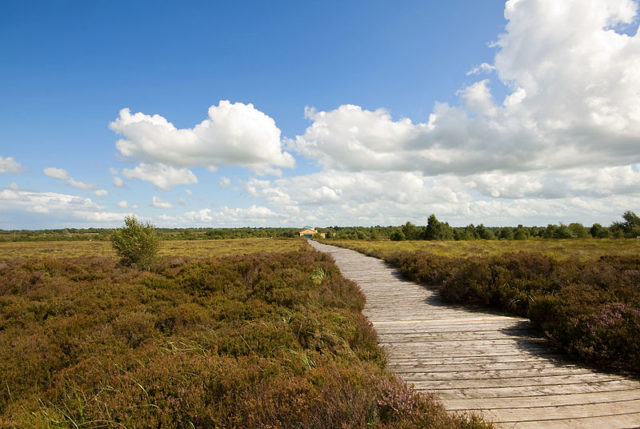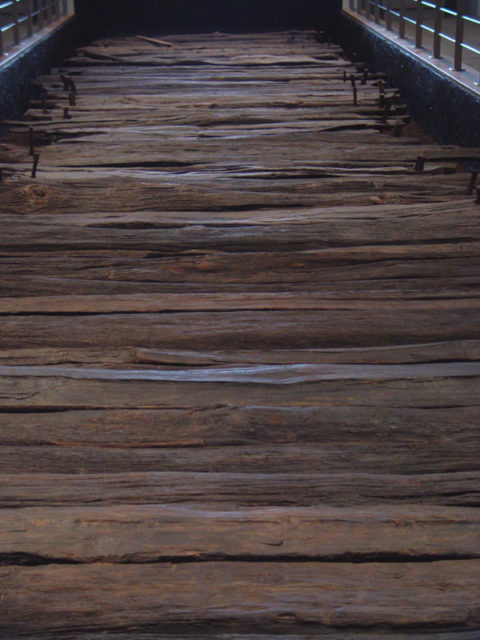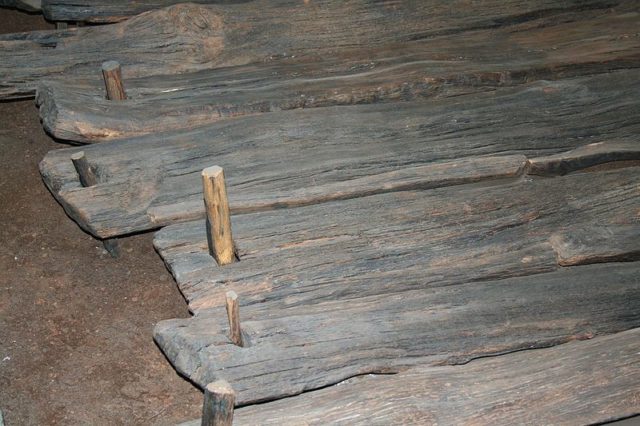In 1984, commercial harvesting of peat near Kenagh, Ireland, unearthed a 2000-year-old togher or trackway. The Corlea Trackway (Bothar Chorr Liath) is one of the best-preserved specimens of these ancient, elevated wooden roads that have been found all over north-western Europe.
By the time the Corlea Trackway had been built, between 148 BC to early 147 BC, this technology of raised wooden roads was common as a way for ancient people to cross marshy land. Uniquely, European toghers were in use from the Neolithic era right up until Medieval times.

Although today the land where the Corlea Trackway was discovered is flat and open, at the end of the last ice age, much of Ireland is believed to have been covered in bogs – swampy, soggy wetlands formed by decomposing plants. Also present were quicksand, ponds, and dense stands of birch, willow, alder, and hazel trees. These boggy, dangerous conditions existed for thousands of years. It would have been very hazardous to cross this area for most of the year.
Ancient peoples developed the technology for building these elevated wooden roads either to get into or to cross the bogs. The technology used to build the Corlea Trackway was extremely labor intensive and required highly-skilled carpentry. Most trackways were constructed merely of woven hurdles on top of piled brushwood and were suitable only for foot traffic. The Corlea Trackway, however, is a corduroy road, made of split planks that had been laid on top of raised rails. Because of its size and construction, the Corlea Trackway could accommodate wagon traffic.

Corlea is the largest togher discovered in Europe, spanning about one kilometer and is about three and a half meters wide. Three hundred large oak trees were felled to create the planks and about the same amount of birch was needed for the rails. This equates to about a thousand wagon-loads of construction material.
The Corlea Trackway leads to a small island that was excavated in 1957. A second togher about one kilometer long was on the other side of the island. Exactly what ancient peoples used the Corlea Trackway for is not certain. Smaller toghers, it is believed, were used to get into the bog, rather than across it. It is known that the people of these regions performed ritual sacrifice involving leaving objects made from valuable metal such as swords, and as well, even people, to remain under the watery bogs. For centuries, peat harvesters and archaeologists have pulled perfectly preserved artifacts and bodies out of the peat. However, because the Corlea Trackway is so massive, it may have also been used to cross the entire bog as well.

In any event, like almost all trackways, it was not to last. Within less than a decade, it had sunk under its own weight into the bog, where it was preserved by the anaerobic conditions. To date, after being excavated, only about 18 meters of the original trackway still survives above water and can be seen at a visitor center in Kenagh; the rest of the Corlea Trackway was left to the bog.
Read another story from us: The Corlea Trackway is a 2000 years old wooden road in Ireland
About 80 meters of modern sidewalk has been built over the buried trackway leading to the visitor center so that modern people can literally walk the same road as the ancients.
Writer: Francey Jesson
